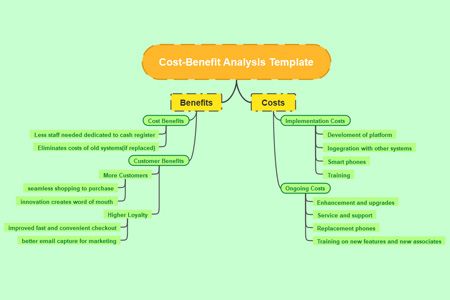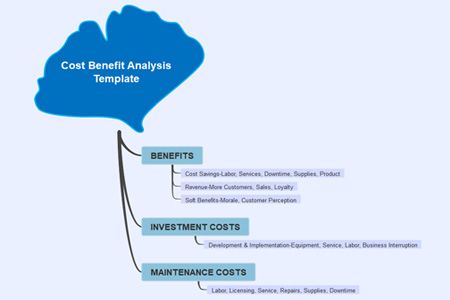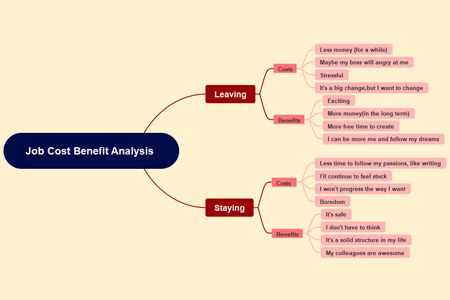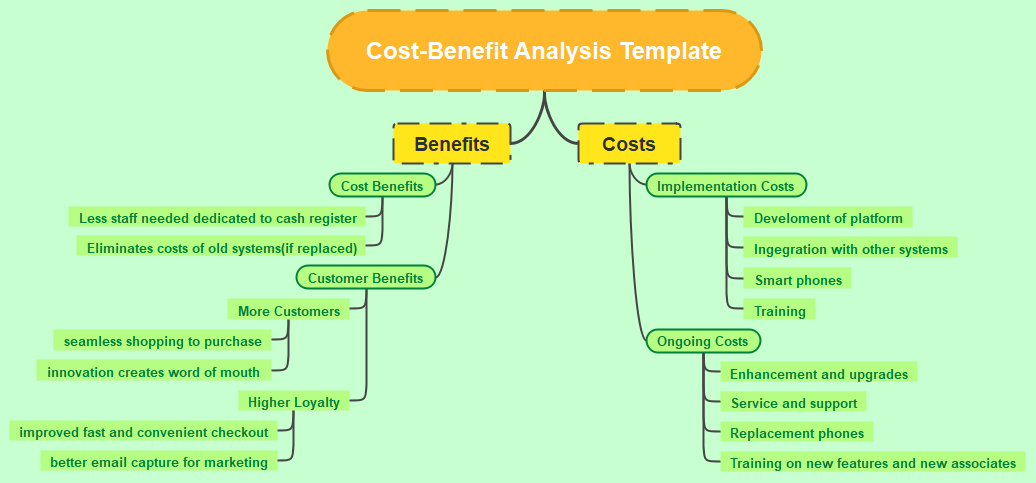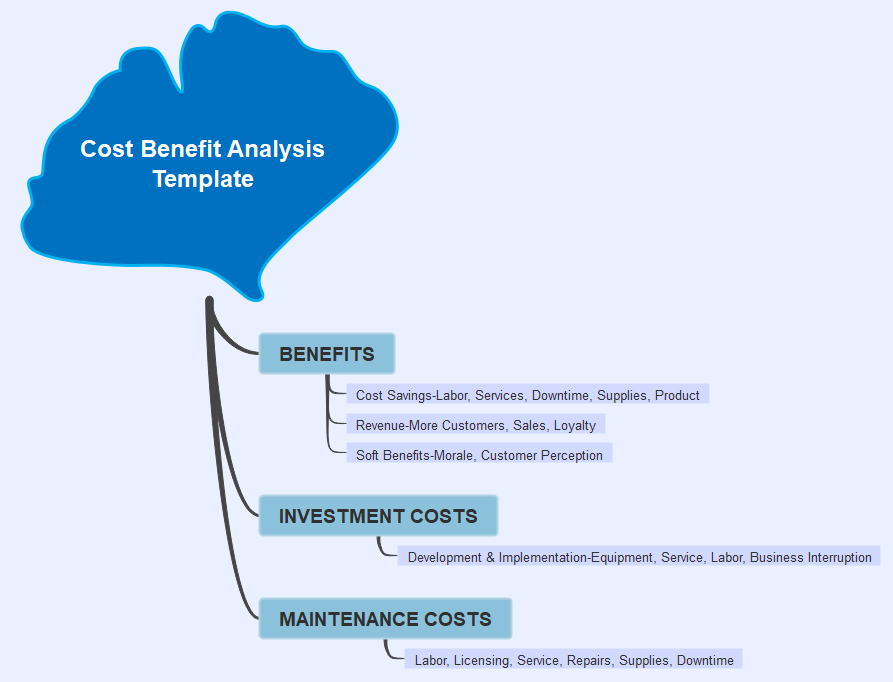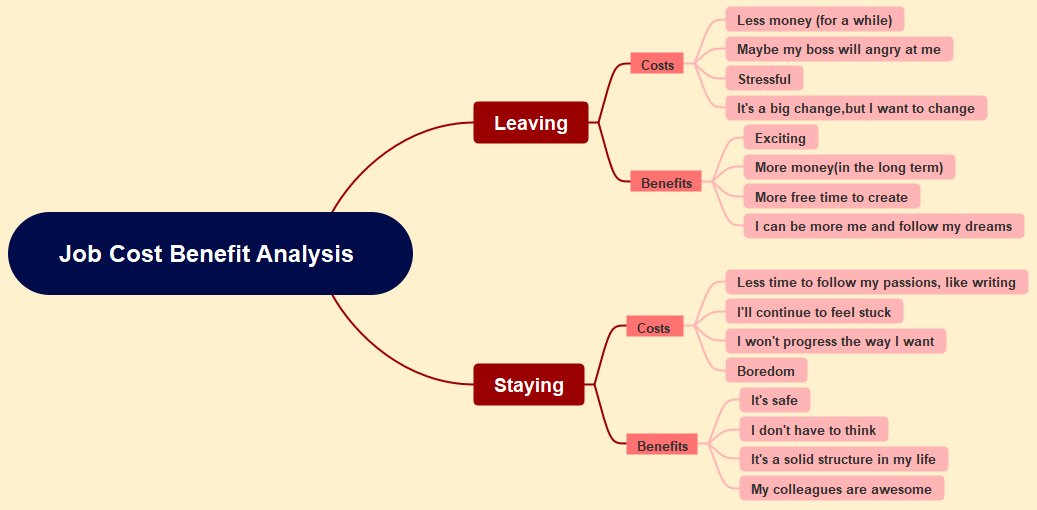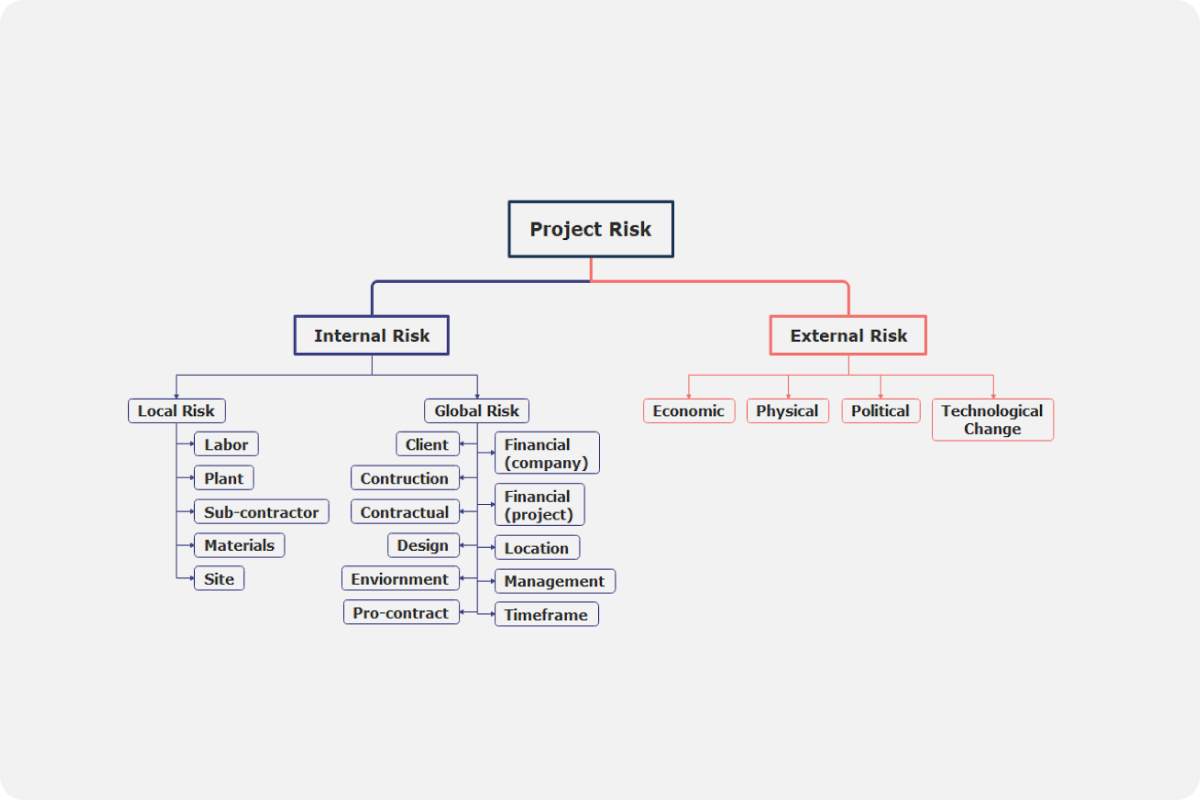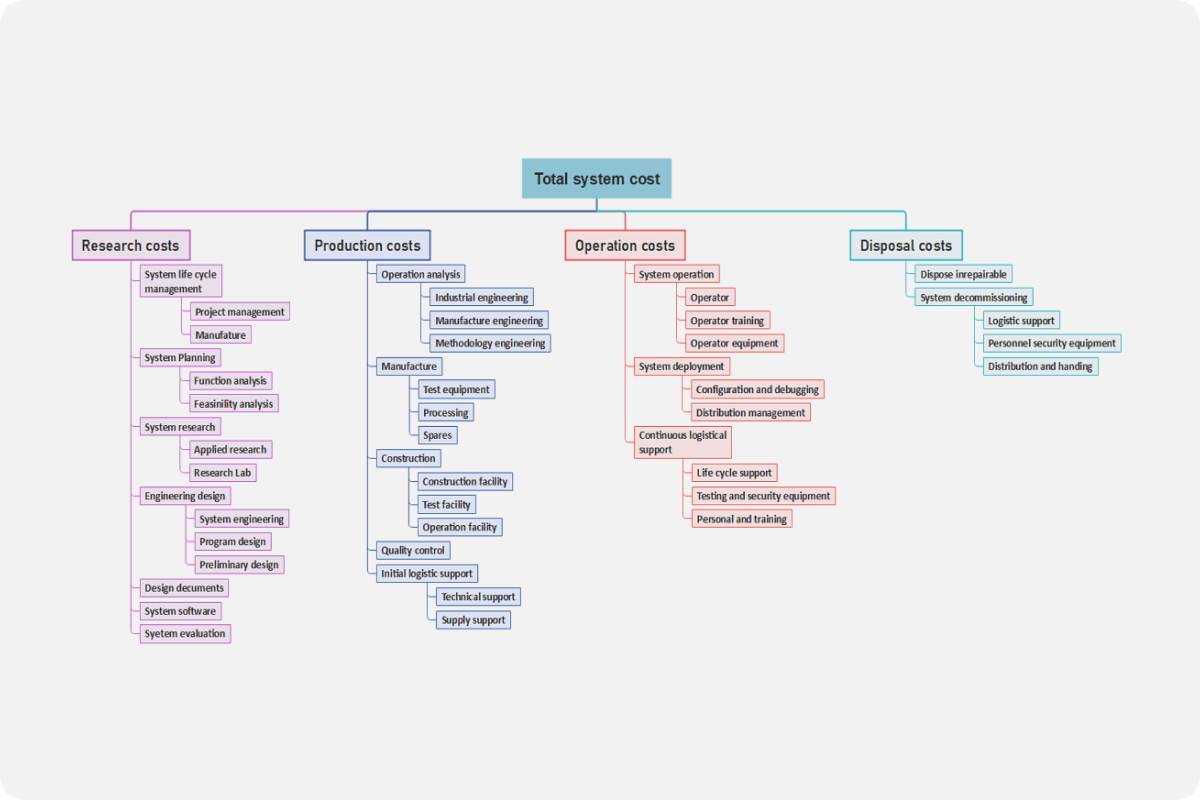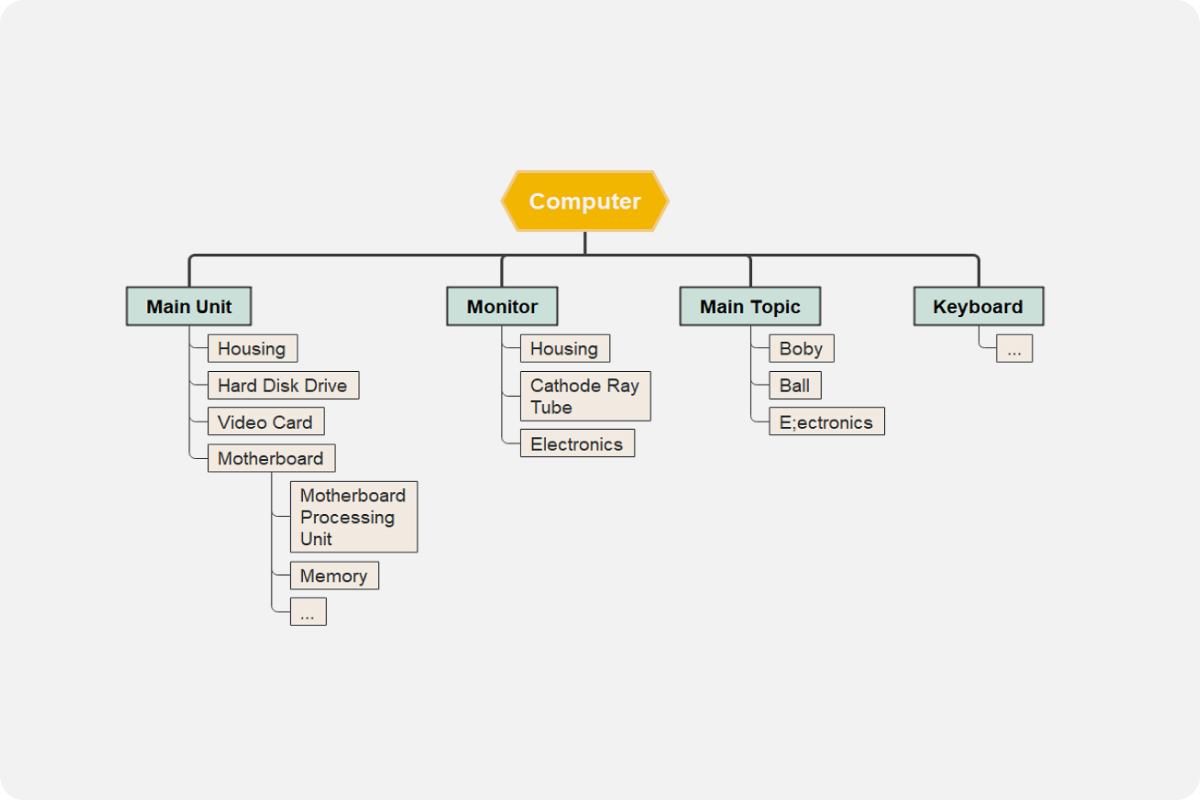Cost Benefit Analysis Template
Get a forecast of whether your proposed project will succeed through a cost-benefit analysis.
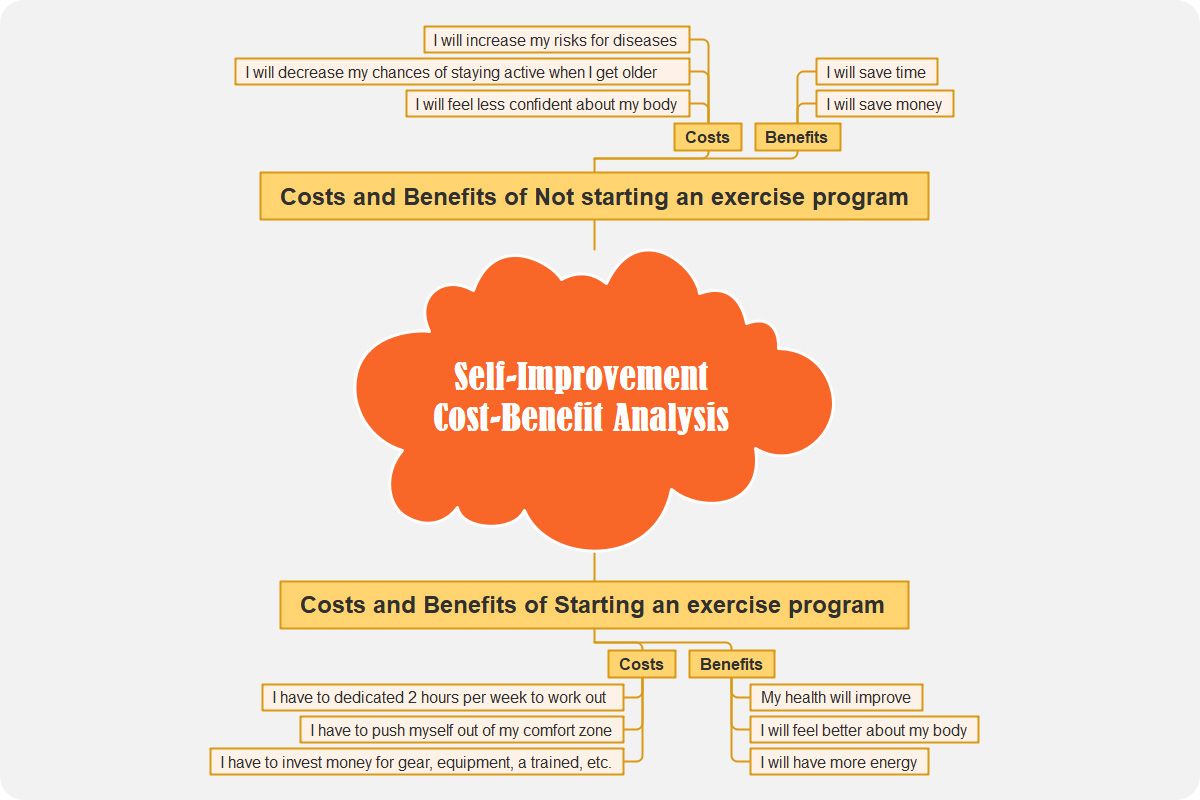
More Cost-Benefit Analysis Template
About the Cost-Benefit Analysis Template
What is a cost-benefit analysis?
In the mid-19th century, French engineer and self-taught economist Jules Dupuit used the fundamental concepts of what is now known as the cost-benefit analysis. Dupuit used the idea to determine tolls for the bridge project and outlined all the principles of the evaluation process in a written article in 1848. The method was then refined and popularized by British economist Alfred Marshall in the 1800s.
Before taking on a new project or building a new plant, a project manager must conduct a very cost-benefit analysis to properly assess all potential costs as well as revenues that the company will generate from the project. The analysis will determine if the project is financially feasible or the company has to abandon it and pursue another project.
In the simplest terms, a cost-benefit analysis is a procedure where the costs and benefits are evaluated to find the most cost-effective alternative. It is a versatile method usually used for business, public policy, and project decisions.
What is a cost-benefit analysis used for?
There are various reasons why a company or an organization would use cost-benefit analysis. The most obvious is identifying the profitability and expected financial returns of an investment or a project. The initial results of the analysis will also serve as a baseline to measure the success of an ongoing project. The method helps project managers, stakeholders, and sponsors manage, measure, and monitor the project's value against the original expectations.
The cost-benefit analysis serves as the foundation of the process in decision-making across various disciplines. In government, finance, business, and even the nonprofit industry, the cost-benefit analysis provides a valuable and unique insight when:
- Evaluating new hires
- Weighing investment opportunities
- Evaluating change initiatives
- Developing benchmarks for a campaign project
- Deciding whether to proceed with the project
- Assessing social benefits
- Assessing effects on participants and stakeholders
- Appraising the desirable results of suggested policies
Pros and Cons of Cost-Benefit Analysis
Suppose you decide to follow a cost-benefit analysis template; there are several positive reasons for businesses and organizations to choose this method as part of their decision-making process. On the other hand, this method also has limitations and potential disadvantages and must be considered before relying solely on the cost-benefit analysis.
Pros
- Cost-benefit analysis is data-driven, allowing an organization or individual to assess a decision or potential projects free of personal biases and opinions. Since it is evidence-based, the method helps your business be more data-driven and logical in its operations.
- As business decisions are typically complex, cost-benefit analysis streamlines significant points and simplifies decisions. By reducing a decision to benefits versus costs, the cost-benefit analysis can make them more straightforward and less complex.
- Since the method allows you to sit down and outline all potential costs and benefits related to the project, it can help you and your team uncover the not-so-obvious factors like intangible or indirect costs.
Cons
- Indeed the method helps you outline projected costs and benefits associated with the business decision; however, it can be a handful to predict all variables and factors that can impact the outcome. The changes in market demand, global business environment, material costs can sometimes be unpredictable and inconsistent.
- It is a given that the cost-benefit analysis is data-driven. However, if one relies on inaccurate and incomplete data to complete the cost-benefit analysis, the results will also be incomplete and inaccurate.
- It is most ideal for short and mid-length projects only. A cost-benefit analysis will likely miss the mark for various reasons for business decisions and projects involving longer timeframes. It can be challenging to make accurate predictions for long-term projects. There is also a possibility that long-term forecasts will not correctly account for many variables like inflation, which can significantly impact the overall accuracy of the analysis.
- Using the cost-benefit analysis removes the human element of the overall business decision. The desire to create a profit indeed drives most companies; however, there are also non-monetary reasons a company might decide to pursue a decision or a project. In this case, it can be a handful to reconcile business cases with moral perspectives.
What are the common tools of a cost-benefit analysis?
The set of indicators and tools used for the cost-benefit analysis has to be in line with the company's requirements. However, various common indicators cover the most familiar success measures. Below are the following:
- Net Present Value (NPV).This indicator represents the current value of a group of cash flows. Cash generally flows out when the company or organization spends money and is received with earnings and revenues. By tabulating the inflow and outflow of cash over a period of time, you can see a clearer picture of the cash flow. This tool also gives the organization an idea of how much money is needed to have the system going.
- Payback Period (PBP).This tool determines when the initial investments equal the accumulated benefits—the shorter the project duration, the faster the profits. Various payback periods can be obtained depending on whether the time value of money is taken into consideration or not.
- Benefit-Cost Ratio.This indicator compares current values of all benefits with the existing values of all costs expected in an investment or a project. When a value is greater than 1, it signifies a profitable project with total returns surpassing the discount rate. On the other hand, a value lesser than one indicates that the predicted cash flow series is not a profitable option.
- Return of Investment (ROI).ROI is typically calculated for only a single period. Its basic formula is the division of the predicted constant return by the amount of investment. There are also various investment return methods, such as annualized and cumulative ROI.
- Internal Rate of Return (IRR).This indicator is determined by calculating the net present value. The IRR represents the discount rate that leads to an NPV of zero applied to the individual prediction. The resulting rate represents the return rate of an investment.
Cost-Benefit Analysis Templates
Cost-benefit analysis varies from company to company. And how extensive the analysis can be, depends on how big the project is. Here are a few examples of how companies treat their cost-benefit analysis.
The first cost-benefit analysis template above focuses on a retailer's analysis of the potential rollout of smartphone-based mobile checkout—the customer benefits of additional customers, resulting in higher loyalty and a much higher spend. Looking at the forecast, you can conclude that investing in this rollout is a no-brainer. Of course, the retailer also must understand the effects on customer experience and behavior. However, just classifying the benefits signifies a solid case for the smartphone-based mobile checkout.
One of the limitations of the cost-benefit analysis is time. It is a significant factor, considering that not all predictions and forecasts can be applicable for the next three to five years, for example. It should be fitting to note that incorrectly calculating the labor savings cost because of increased productivity is one of the concerns in this type of analysis. You are not getting actual cost savings unless the company reduces headcount, overtime, or paid hours. Do not leave out or incorrectly calculate customer benefits apart from cost-saving benefits.
